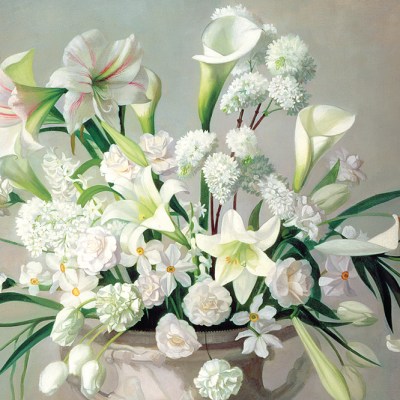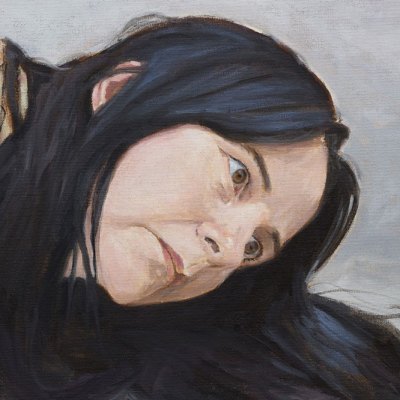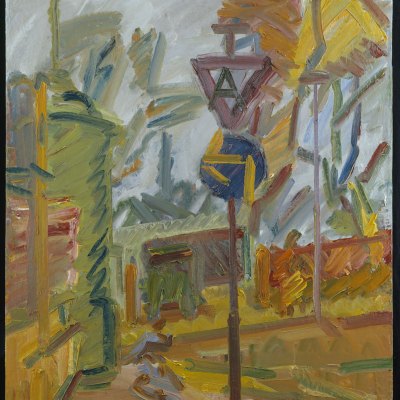Andrew Bonacina

When Andrew Bonacina was chief curator at the Hepworth Wakefield he was known for organising exhibitions that focussed on what he called ‘under-recognised’ artists, Alina Szapocznikow or Lynda Benglis, for example. Bonacina’s exhibition of Magdalene Odundo at the Hepworth in 2019 brought the Kenyan-born potter even greater international recognition. So perhaps it’s fitting that one of the first shows he’s worked on since leaving the museum has grown out of that persistently under-recognised artist, Gwen John.
‘Interior’, a group show at Michael Werner Gallery, London, that brings together contemporary works with works from across the 20th century, takes paintings by John as a starting point. According to Bonacina, ‘it grew out of conversations with artists in the exhibition […] and research into historical figures such as John and Austin Spare.’ Gradually, Bonacina ‘started to home in on a shared sense of these artists approaching their subjects as interiors to be explored.’
Young Woman in a Red Shawl (c. 1920), Gwen John. Private collection. Photo: Damian Griffiths; © the estate of the artist.

John, of course, was the sister of Augustus as well as the lover of Rodin. She is possibly best known for her portraits of women. Her reputation had been, until about ten years ago, overshadowed by those two men in her life. Then signs of a reappraisal began. Bonacina ‘could look at her works forever,’ he says. But one of the things he finds most interesting is the artist’s relationship to what she depicts. ‘There is obviously a return to figuration [among contemporary artists],’ he says. ‘A lot of it, I feel, is very quick and surface-level. It’s about representation, but not often subjectivity. With someone like Gwen John, there is just this incredible understanding. It’s obsessive, the way she wanted to try and capture these people, who she just wanted to understand.’
This obsessiveness is revealed in how she returned to the same subject again and again, as well as in the way her technique developed. ‘From the 1920s onwards, she really changed how she painted,’ says Bonacina. ‘She went from using more translucent layers to a dry oil which she really worked into the canvas surface. You get the sense of her trying to find a technique from which she could express what she wanted to convey about a particular person.’ The point, for Bonacina, is that this echoed what he saw in the work of many of the contemporary artists who appear in ‘Interior’. ‘Lots of the artists in the show go through a similar process of trying to find a material or a way of working that allows them to process this excavation of their subject,’ he says.
Installation view of ‘Interior’ at Michael Werner Gallery, London. Photo: Eva Herzog; courtesy Michael Werner Gallery, New York and London
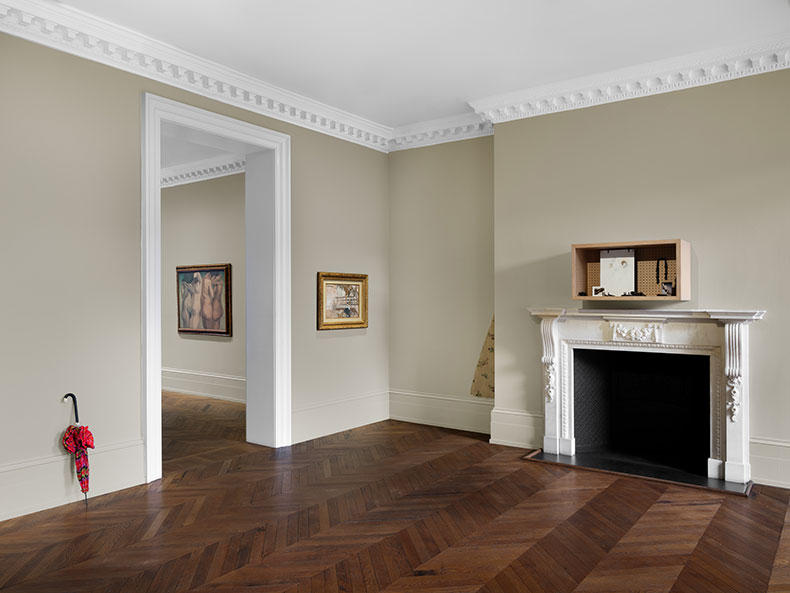
Bonacina pulls on this thread when he starts talking about one of the more surprising and delightful groups of works by Anne Low – umbrellas or, as Bonacina calls them, ‘sculptural forms’ which are leaning against the wall. They work as ‘punctuation marks’ around the gallery, but they also reach out to a much wider frame of reference. Low often uses techniques ‘associated with the history of decorative arts and domestic interiors’, Bonacina explains. Due to their form, her works are associated with histories of labour and women working in the textile industry, but the meticulous care taken in their creation transforms them from everyday objects into what she calls ‘conduits for subjectivity’.
Part of the excitement of ‘Interior’ is experiencing so many different ‘subjectivities’ through so many different techniques. Bonacina has also played with the interior architecture of the gallery which was itself originally designed as a domestic space. Passing from room to room, one discovers above all that intimacy and knowledge are what’s at stake here. It is surprising to see rugs on the floor of one of the rooms. The idea for these came from one of the artworks in the exhibition, Hilary Lloyd’s video portraits. They are shown on hulking great TV sets and bring in another layer of domestic history and voyeurism. Lloyd’s portraits, shot from ground level, include rugs that inspired Bonacina to pull them into the actual space. ‘I wanted people to walk into the space and not feel like they were entering a gallery,’ he says. Instead, he wanted to ‘play with different ways of engaging with works in a more intimate way.’
Installation view of ‘Interior’ at Michael Werner Gallery, London. Photo: Eva Herzog; courtesy Michael Werner Gallery, New York and London
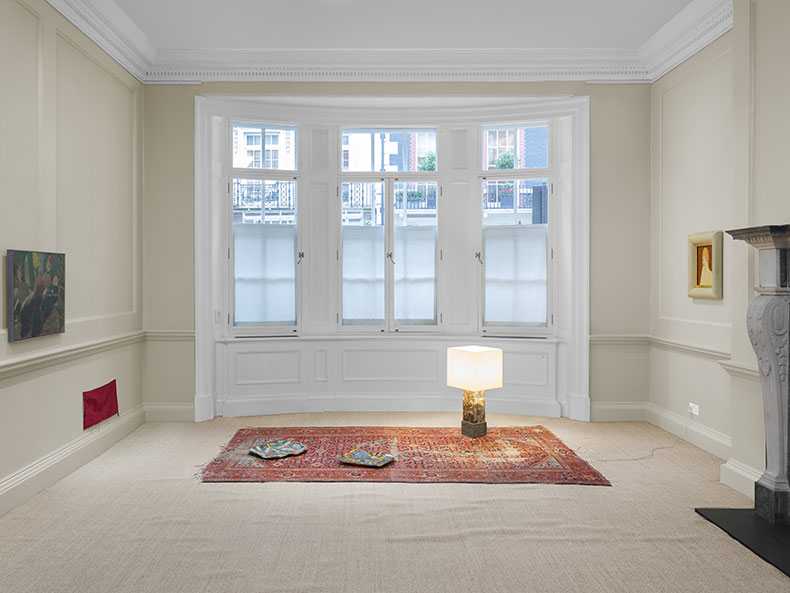
There’s a freedom in the way the exhibition has been put together, a willingness to break out of the confines of a contemporary art show – the walls, far from the white cube one expects of a gallery are now painted a soft green called ‘Setting Stone’. Bonacina is aware that this is more playful than a museum show, ‘but maybe I embrace not being in an institution,’ he says.
This is not to deny the rigour of the curation. The range of artists included in this show is delightfully broad. It is a pleasure to see Raphaela Simon’s Fall 2 in conversation with Francis Picabia’s Masque while Austin Osman Spare’s ‘Quasi-automatic Drawings’ set the tone of the winter garden, introspective, liberated, uncanny. Bonacina’s command of his century-spanning material is controlled and illuminating, even when the experience of it is relaxed and expansive. At the centre of a wall in one of the upstairs galleries is a work which seems to bring the entire exhibition together in a single canvas. Frank Auerbach’s Reclining Head of Julia was painted through the years of Covid. It is an entirely contemporary work. The colours – greens and creams and pinks – seem close kin with Andy Robert’s 1st Generation that hangs next to it or even the pinks of Florian Krewer’s Untitled on the opposite wall. It is the work of an artist who has tirelessly pursued his own technique of revealing character and paint, of layering and scraping away. It could have been seen as the work of a specific period. Yet in this company, it is like seeing Auerbach’s work through new eyes. ‘Interior’ makes you approach the spirit at the heart of the artwork afresh.
Reclining Head of Julia (2020-2021), Frank Auerbach. Photo: Mark Dalton; © the artist

‘Interior’, curated by Andrew Bonacina, is at Michael Werner Gallery, London, until 4 February 2023.

